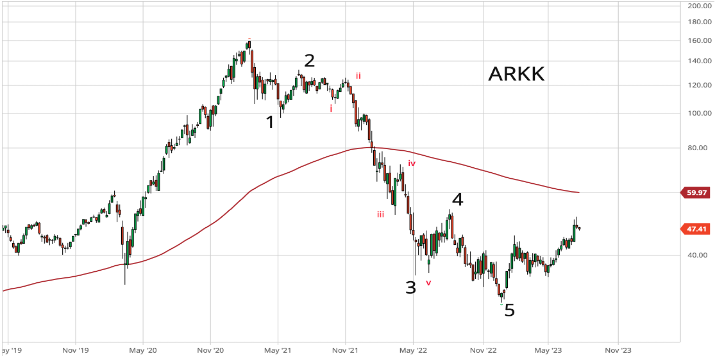A year ago, we shared a telling analogy. By examining the shale experience between 2010 and 2020, we could glimpse Silicon Valley’s future. Both experienced profitless technological revolutions funded by cheap capital, and they benefited society greatly.
First, we came to believe that labor markets would remain tight despite fears of a recession.
Our bet was that Silicon Valley would experience a confined downturn, similar to the shale bust of 2015–16. Back then, over 170,000 oil and gas jobs disappeared, but if you weren’t in the industry, you could be forgiven for not noticing. The national unemployment rate continued to decline. The US economy as a whole was growing even as the shale industry was in a slump.
Thus, despite the long list of tech companies announcing layoffs, we estimated that the total number of affected workers would be insufficient to move the labor market, even within the tech industry employing more than twelve million people. Over the past eighteen months, there have been close to 250,000 tech layoffs, yet the unemployment rate remains historically low at 3.7 percent.
Second, sequencing matters when a boom turns into a bust, so let’s pinpoint the three stages: the first focuses exclusively on growth; the second, when things go south, is marked by capital discipline; and the third is defined by the distribution of free cash flow to shareholders.
When companies are seen to be making progress in the second stage the market rewards them with higher share prices. Many stocks can double, even if this amounts to a countertrend rally. We saw evidence of this taking form in December and argued for another tech bull run. The Nasdaq index is up 44 percent since then.
We made a few more observations about how the boom–bust cycle unfolds:
EOG Resources, one of the great success stories of the shale boom and dubbed “the Apple of oil,” fell 52 percent from mid-2014 to early-2016. Then it rose to a record high in October 2018, rising 12 percent above the previous peak before another major leg down. This allowed us to imagine technology stalwarts Apple and Microsoft making new highs in the upcoming bull phase. Apple rose 6 percent above the November 2021 high, while Microsoft is on the verge of breaking out.
The S&P 500 Energy Sector ETF (XLE) peaked in June 2014 and had fallen 51 percent by January 2016; it then rallied 60 percent by October 2018 with a lot of dispersion (Exxon lagged while Chevron nearly managed to reclaim its prior high) before dropping another 71 percent through March 2020.
We took this to mean the FANG stocks—Facebook (Meta), Amazon, Netflix, and Google—which fell 54 percent from the peak, on average, would rally with the market, but we wouldn’t see them surpassing their recent highs. This is true for now. Meta’s stock has more than tripled since bottoming out in October and yet remains 20 percent below the 2021 high.
That the total return for the large-cap energy stocks from 2010 to 2020 was effectively zero made us wonder: What if that is the case for FANG stocks between 2018 and 2028? That would shock everyone! Given the end of the software zeitgeist, however, such a thing is not improbable.
The more speculative energy stocks grouped into the S&P 500 Oil & Gas Exploration and Production ETF (XOP) plunged 73 percent from mid-2014 to early-2016 when oil prices crashed, only to be followed by a 100 percent gain in twelve months as shale companies laid off workers and cut spending. Then, however, it dropped another 83 percent to the March 2020 low. The road to generating meaningful free cash flow is difficult and protracted.
The analogy we drew was with Cathie Wood’s Ark Innovation Fund (ARKK), which fell 81 percent from its February 2021 peak. In this second stage, we anticipated ARKK would double in value to around $60 a share before declining 75 percent to its final low later in the decade. For now, the rally is incomplete. ARKK is 30 percent away from our target level, which would certainly push the S&P 500 to a new all-time high above 5,000.
Hold off your bearish bets till everything comes together. There’s still time.

Source: barchart.com







